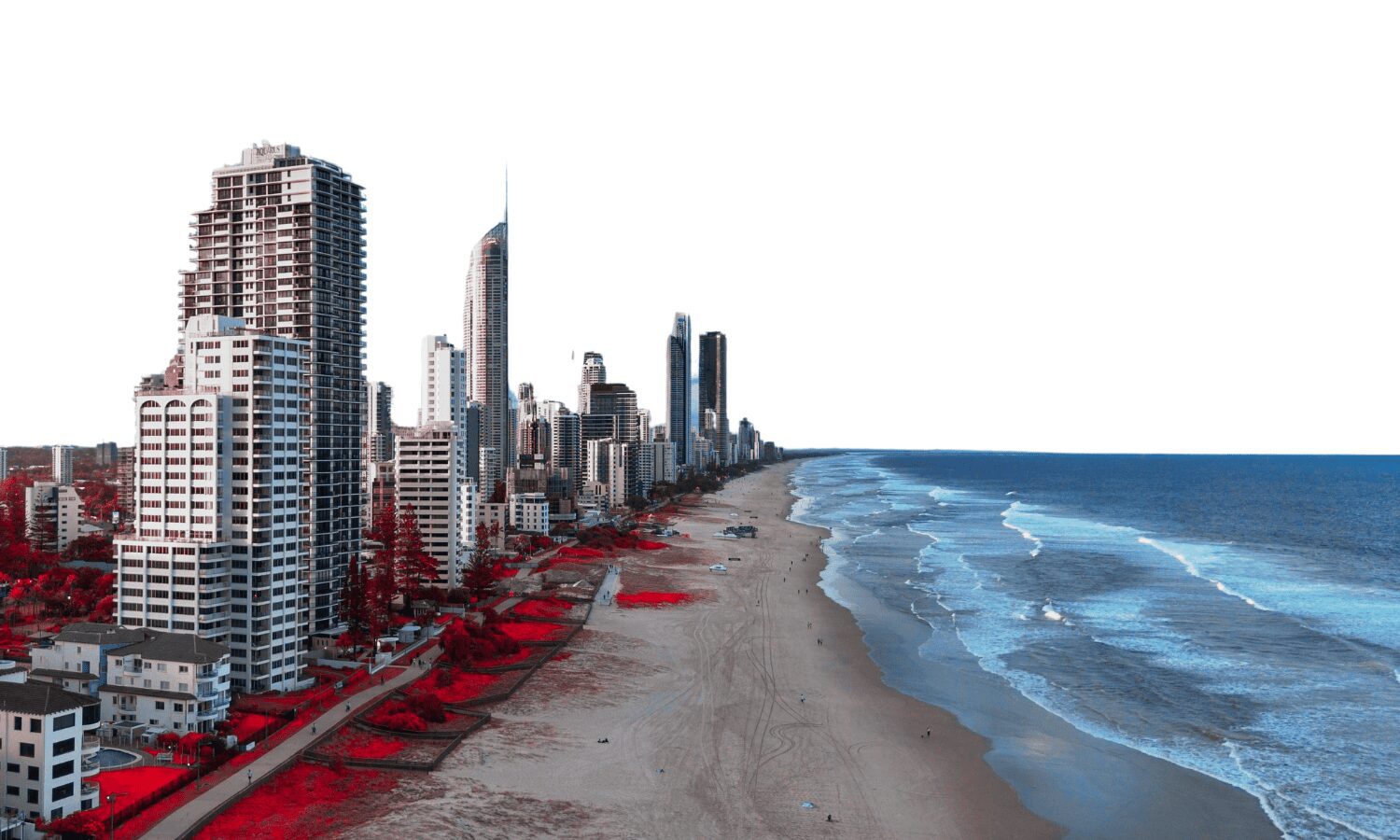How Coastal Homes In Spain Are Being Swallowed By A Rising Sea
Spain’s coastline is shrinking, caught in a relentless battle between rising seas, legal disputes and private interests. Thousands of homes now stand precariously close to the waves, some awaiting demolition, others clinging to legal loopholes. As nature advances, the struggle for land — and survival — intensifies.
Article
2025

Article
The Spanish coastline is a natural treasure, but also a legal powder keg. Every year, the sea is gaining ground, the beaches are narrowing and dozens of buildings — some of them luxury residential developments — have now literally their feet in the water.
What happens when your house is too close to the sea? Who protects whom: the law protects the owners, or the sea protects the coast? This is the silent conflict raging along Spain’s 8,000 kilometers (4970 miles) of coastline, where the Coastal Law, climate change and property rights collide with no end in sight.
The 1988 Coastal Law established an invisible but implacable red line: Everything less than 100 meters from the shore in urban land (or 200 meters in undeveloped land) belongs to the public domain. The problem is that, by the time that line was drawn in the sand, there were already half a million homes located less than 100 meters from the shore, according to data from the platform that lists those affected by the Coastal Law.
These range from humble fishermen’s houses to behemoths such as the El Algarrobico hotel in Almeria, that concrete skeleton that has been rotting for two decades 15 meters from the water, waiting for the courts to decide its fate.
Legal limbo
Official figures depict a concerning situation: In 2012, the Spanish governmentacknowledged the existence of about 10,000 homes built on the sand, and the 2013 reform of the Coastal Law mentioned 12,800 homes that «could be regularized» and up to 140,000 homes likely to be eligible for an amnesty for building permits. Many live in a legal limbo, covered by administrative concessions that keep them afloat temporarily.
Some stories have become symbols of this unequal struggle between humans and nature
But the sea has no understanding of paperwork or deadlines. Scientists at the Spanish Institute of Oceanography have been warning for years that the Mediterranean Sea is rising by 3.4 millimeters (1.3 inches) every year, while Spanish beaches are losing an average of 1.5 meters (4.9 feet) a year in critical areas such as the Cadiz Gulf or the fragile Ebro Delta.
Some stories have become symbols of this unequal struggle between humans and nature. In the seaside El Palo neighborhood of Malaga, 570 one- or two-storey houses survive from one deferral to the next. Its inhabitants (some 4,000 people) have been asking for four decades for a solution for houses that, when they were built, were inland and today are listed as public domain. The 2013 reform gave them some impetus, but the recent regulation has brought uncertainty back.
Five times in five years
In January 2020, Storm Gloria tore up walls, broke walkways and pushed the Mediterranean several meters into the estates of Les Deveses beach in Denia (Alicante province). The Coastal Law stipulates that, if the waves reach a house five times in five years, the land can be expropriated for public safety. The City Council is now negotiating with the Coastal Authority to allow the 8,000 affected houses to stay in place in exchange for prohibiting new apartments on the most endangered plots.
Meanwhile, local residents are calling for sand to be brought back to the beaches and artificial reefs to be built before there is any talk of demolition.
The legal conflict surrounding these properties is as complex as it is painful for those who live there
But undoubtedly the main symbol is El Algarrobico: a hotel with 411 rooms, located 14 meters from the sea and within a natural park. Twenty years of lawsuits have confirmed its illegality and the government has initiated the expropriation to demolish the part that belongs to the state.
The legal conflict surrounding these properties is as complex as it is painful for those who live there. When a construction is built on public maritime domain, the law is clear: Any damage caused by the sea or storms cannot be repaired.
Temporary solutions
The Association of People Affected by the Coastal Law claims that the state is carrying out a «concealed expropriation» by denying any kind of compensation to landowners. The government, for its part, argues that by applying the law it is only taking action when there is an imminent risk to people’s safety.
And climate change has turned this latent problem into an accelerated emergency. According to a Greenpeace report based on data from the U.N.-appointed Intergovernmental Panel on Climate Change (IPCC), by 2050 the sea will have gained about 15 meters (49.2 feet) in particularly vulnerable areas such as the Costa Brava or Marbella. Facing this announced crisis, the solutions that are being applied seem to be more like temporary fixes.
Some municipalities have chosen to inject tons of artificial sand on their beaches, only to see how storms and floods take away much of the effort and money invested. The alternatives involve more radical and less popular strategies. In Spain, only timid steps have been taken in this direction, as in El Saler in Valencia province, where some particularly vulnerable constructions were demolished.
The VIP version
This coastal drama has, like almost everything, its VIP version. While residents of fishing villages are watching their homes being taken away from them by the sea, in luxury developments such as Sotogrande (Cadiz) or La Manga (Murcia), private breakwaters and containment barriers are being built to alter the natural course of erosion.
The most flagrant case is in Marbella which, according to the Observatory of Sustainability, ranks first in the list of towns that openly violate the Coastal Law. Among them are luxury villas belonging to celebrities who pay annual fines and continue to enjoy the privileged sea views.
In this context, the General Coastal Authority (DGC) admits that «unpopular decisions» will have to be taken in the coming years. The numbers leave no room for doubt: according to the president of the European Investment Bank (EIB), Nadia Calviño, «1 euro invested in prevention and resilience saves between 5 and 7 euros on repairing the damage». But in a country where tourism generates 13.4% of GDP, according to Exceltur, no one seems willing to kill the golden goose.
While politicians are debating, and the courts are delaying their decisions, the sea continues its slow but unstoppable progress. Homes, getting closer and closer to the water, are silent witnesses of a battle that, sooner or later, nature will win.
This content is part of a collaboration agreement of ‘WorldCrunch’, with the magazine ‘Ethic’. Read the original at this link.






